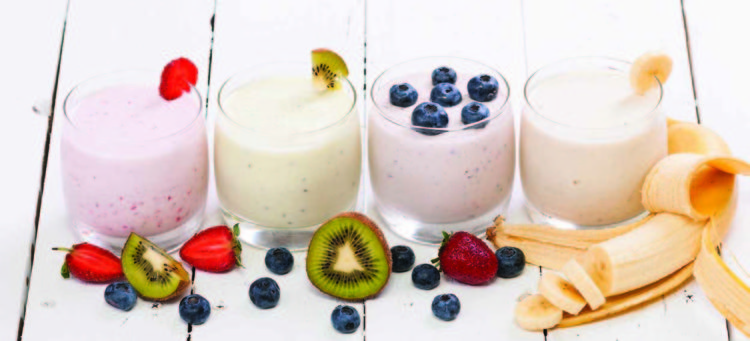
Trending
Kefir (n.): The modern morning milkshake
September, 2017
Is it key-fur or kuh-feer? Both are correct, depending on who you ask, but regardless of how you pronounce it, you’ll want to keep an eye on this buzz-worthy, dairy super-drink—an all-in-one elixir of vitamins, minerals and probiotics that many swear leave you feeling the difference. The best part? You can make your own in just a few easy steps.
Where Is It From?
Kefir may be the latest in probiotic dietary supplements, but it can be traced back to Eastern Europe and has been part of the diet of the Caucus region for centuries. When people talk about kefir, they’re usually referring to milk, but the word itself refers to the bacteria cultures (often called “grains”) that are used to ferment this popular drink. It might sound unpalatable when described that way, but the fermentation process is no different from the one we use to make yogurt here in the West. In fact, you can even think of kefir milk as a kind of super-powered yogurt that comes packed with an incredible amount of nutritional value.
Probiotic Powerhouse
The main nutritional value of kefir is the probiotic bacteria that it contains. This is the good kind of bacteria that works with your body instead of against it, boosting your immune system and helping to regulate your digestion. On average, yogurt contains about five strains of probiotic bacteria; kefir can contain over 60 strains, making it the obvious winner in the probiotic department.
The dairy aspect of kefir milk might make the drink seem off limits to the lactose intolerant, but this isn’t the case. Kefir bacteria feeds on the lactose present in the milk as it ferments, breaking down the sugars and rendering the drink harmless to most people with dairy sensitivities. This makes kefir milk a great way to up your intake of calcium and all the other nutrients that milk offers, without the corresponding stomach ache.
Buy It or Brew It
Kefir milk can be found in most organic food stores, but it’s incredibly easy to make at home, too. All you need to get started are a few kefir grains, which can be purchased from organics stores as well as from online retailers.
To start your own batch, place your kefir grains into a sealable glass jar, and fill that jar with milk. Organic whole milk works best, but anything unpasteurized will do. Next, place a lid on the jar—but don’t seal it. Leaving it unsealed allows carbon dioxide to escape as the drink ferments. Lastly, place the jar in a dark, room-temperature space for 24 hours.
After the 24 hours, the milk should be thick and will smell a little bit sour. Don’t worry though; it isn’t spoiled. Next, strain out your grains, and put the brewed kefir milk in the refrigerator to drink at your leisure. If the sour, yogurt-like taste isn’t to your liking, mix in a flavouring agent at this point, like fruit, vanilla or any variety of spices.
Your kefir grains can be placed in another batch of milk, and the process can be repeated every day. You might notice that your grains grow slightly with each batch. This is normal. Eventually, you’ll be able to split them up to double your kefir output, or you could give them to a friend looking to start brewing kefir milk themselves.
Health in Many Forms
Kefir can be used just as you would normally use milk. You can drink it straight, eat it with cereal or add it to a smoothie. Kefir can also be used to make yogurt. You can buy this yogurt in a store, or double-ferment your batch at home for a thicker yogurt consistency. When mixed with fruit or honey, kefir yogurt becomes a healthy and filling breakfast. t8n
Fun Fact
Kefir milk is usually made with cow’s milk, but for a different flavour, you can use goat’s milk, sheep’s milk or even non-dairy options like coconut or soy milk.
Did You Know?
The word kefir comes from the Turkish word keif, meaning “good feeling,” which refers to the soothing effect it has on the digestive system.












